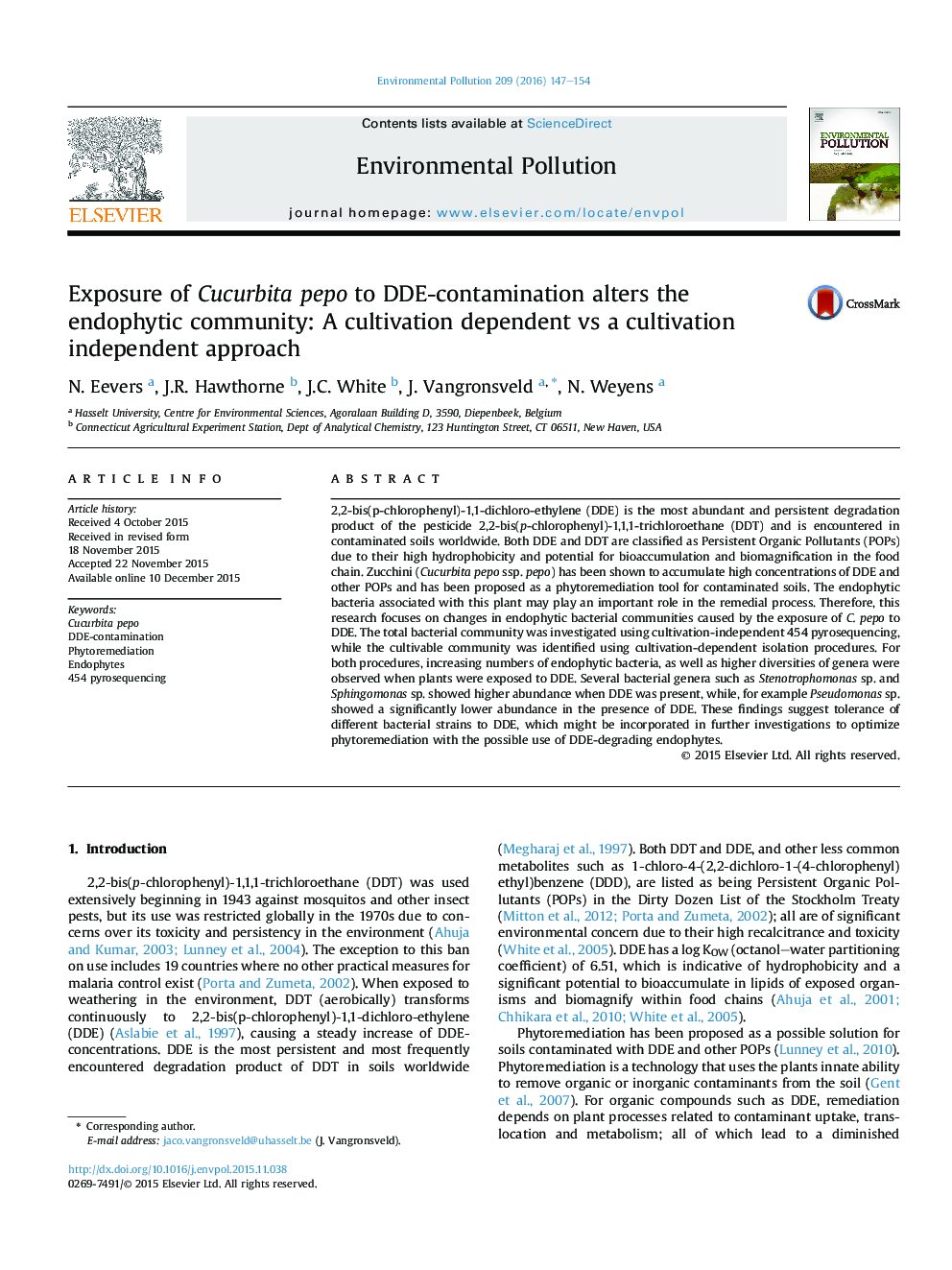| کد مقاله | کد نشریه | سال انتشار | مقاله انگلیسی | نسخه تمام متن |
|---|---|---|---|---|
| 4424274 | 1619164 | 2016 | 8 صفحه PDF | دانلود رایگان |
• Cucurbita pepo accumulates DDE and can be used for phytoremediation.
• Phytoremediation capacity might be enhanced with endophytic bacteria.
• The differences in bacterial communities without and with DDE are investigated.
• Several DDE-tolerant bacteria are discovered and might be used in phytoremediation.
2,2-bis(p-chlorophenyl)-1,1-dichloro-ethylene (DDE) is the most abundant and persistent degradation product of the pesticide 2,2-bis(p-chlorophenyl)-1,1,1-trichloroethane (DDT) and is encountered in contaminated soils worldwide. Both DDE and DDT are classified as Persistent Organic Pollutants (POPs) due to their high hydrophobicity and potential for bioaccumulation and biomagnification in the food chain. Zucchini (Cucurbita pepo ssp. pepo) has been shown to accumulate high concentrations of DDE and other POPs and has been proposed as a phytoremediation tool for contaminated soils. The endophytic bacteria associated with this plant may play an important role in the remedial process. Therefore, this research focuses on changes in endophytic bacterial communities caused by the exposure of C. pepo to DDE. The total bacterial community was investigated using cultivation-independent 454 pyrosequencing, while the cultivable community was identified using cultivation-dependent isolation procedures. For both procedures, increasing numbers of endophytic bacteria, as well as higher diversities of genera were observed when plants were exposed to DDE. Several bacterial genera such as Stenotrophomonas sp. and Sphingomonas sp. showed higher abundance when DDE was present, while, for example Pseudomonas sp. showed a significantly lower abundance in the presence of DDE. These findings suggest tolerance of different bacterial strains to DDE, which might be incorporated in further investigations to optimize phytoremediation with the possible use of DDE-degrading endophytes.
Journal: Environmental Pollution - Volume 209, February 2016, Pages 147–154
